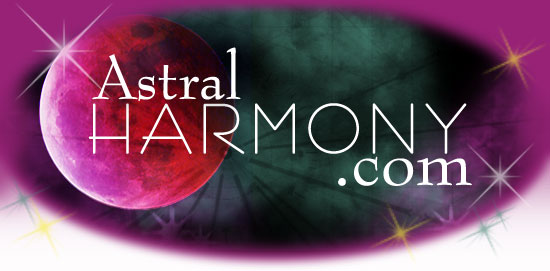| Email not displaying correctly? View it in your browser. |
 |
|
Sunday, July 5th, 2009
A penumbral lunar eclipse will take place on July 7, 2009. This will be the second of four lunar eclipses in 2009. In a penumbral eclipse, the full Moon enters the Earth's penumbral shadow; the light from the Earth is partially blocked; and, the Moon grows dimmer. The eclipse may be seen rising over Australia after sunset on July 7, and setting over western North and South America (including Hawaii) in the early hours before dawn on July 7. “According to NASA, this penumbral eclipse is only of academic interest since the magnitude is just 0.156 at the point of maximum eclipse. Therefore there is only a little chance for seeing any of the eclipse’s dimming effect.” www.timeanddate.com/eclipse/lunar-eclipse-july-7-2009.html According to astrology and other occult traditions, eclipses bring change, and often the changes come before and after the actual eclipse according to key trigger points. For instance, such events may occur later on when another planet crosses the eclipse point or a point opposite. For instance, we might watch what happens when transiting Mercury crosses exactly opposite the eclipse point on July 11; or when Venus crosses the opposite point on August 14; or when Mars crosses the opposite point on Sept. 20. Full Moon energy is powerful, but during an eclipse the Moon’s light is briefly absent, so in the weeks before and after, we have an opportunity to reflect on important personal and professional issues. For example, we might examine how we are nurturing ourselves and our relationships. Is there some place in your life where you need to take more responsibility for your actions (karma)? It might be a good time to take a look at such matters within your own psychological process. In a personal reading, I would look at any points in your natal chart that might be closely triggered by the eclipse. In addition, as the Sun and Moon are in opposite astrological signs during a lunar eclipse, I would examine the transiting Sun-Moon axis superimposed on your natal chart to understand more about your specific “growing edge” at this time. In general, the eclipse falls in Sagittarius. More specifically, the Moon is in Sagittarius and the Sun in Gemini (sidereal positions). Gemini-Sagittarius emphasizes how we must learn to balance our higher and lower minds; test our beliefs and ideals; find purpose and meaning; cultivate wisdom; and most importantly, lighten up and enjoy the miraculous game of life! The Moon is eclipsed at 21 degrees and 24 minutes of Sagittarius. This is closely conjunct the auspicious fixed star Vega (alpha Lyri) in the nakshatra known as Purva Ashadha, in its highly fortunate Pushkara Navamsa ruled by Venus. I believe that Vega was one of the three “Messengers of Light” in the ancient Babylonian tradition, and so I feel that this eclipse reveals a gift. The gift is reflected in the Sun’s position in Gemini conjunct the lucky fixed star Canopus, the “Pathfinder,” which relates to the divine spiritual masters (rishis) of ancient India. The Full Moon in Sagittarius has special importance in the Hindu calendar, and is known as Guru Purnima, a day for honoring one's teachers (gurus). In the Hindu tradition, Guru Purnima is a sacred day to honor the great sage Vyasa, the “guru of gurus” and “father” of the Vedas, the Puranas and other important spiritual scriptures. For all, Hindus and non-Hindus alike, Guru Purnima is a wonderful time to perform spiritual practices and receive grace from the divine realms, especially during the time of the eclipse (8:37 AM UT to 10:39 AM UT, with the strongest time being from 9:21-9:38 UT). To convert UT to your time zone, I recommend this online calculator: www.timeanddate.com/worldclock/converter.html Two weeks after the lunar eclipse, we have a solar eclipse in Cancer! Stay tuned for further updates! | |
|
AstralHarmony.com
|
|

